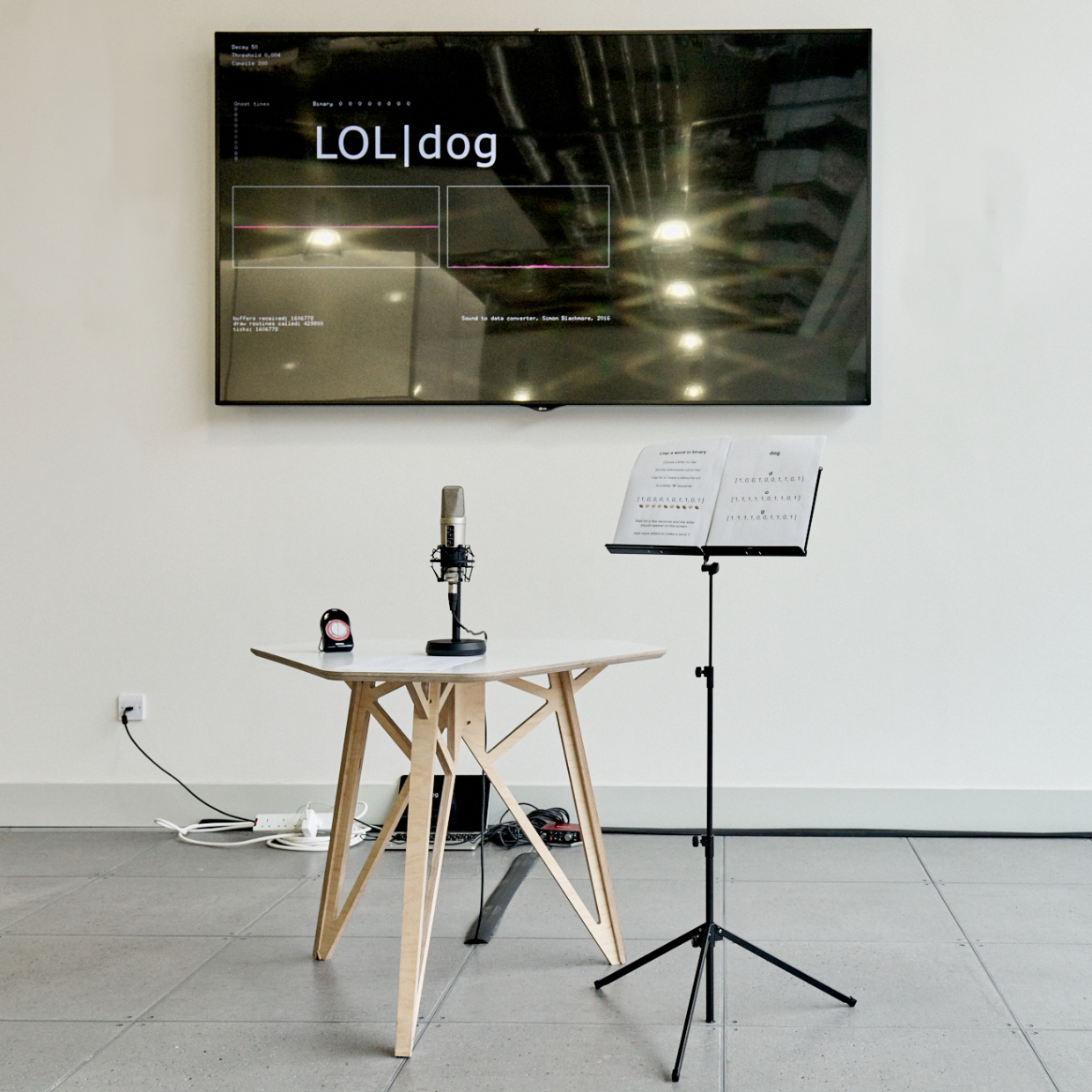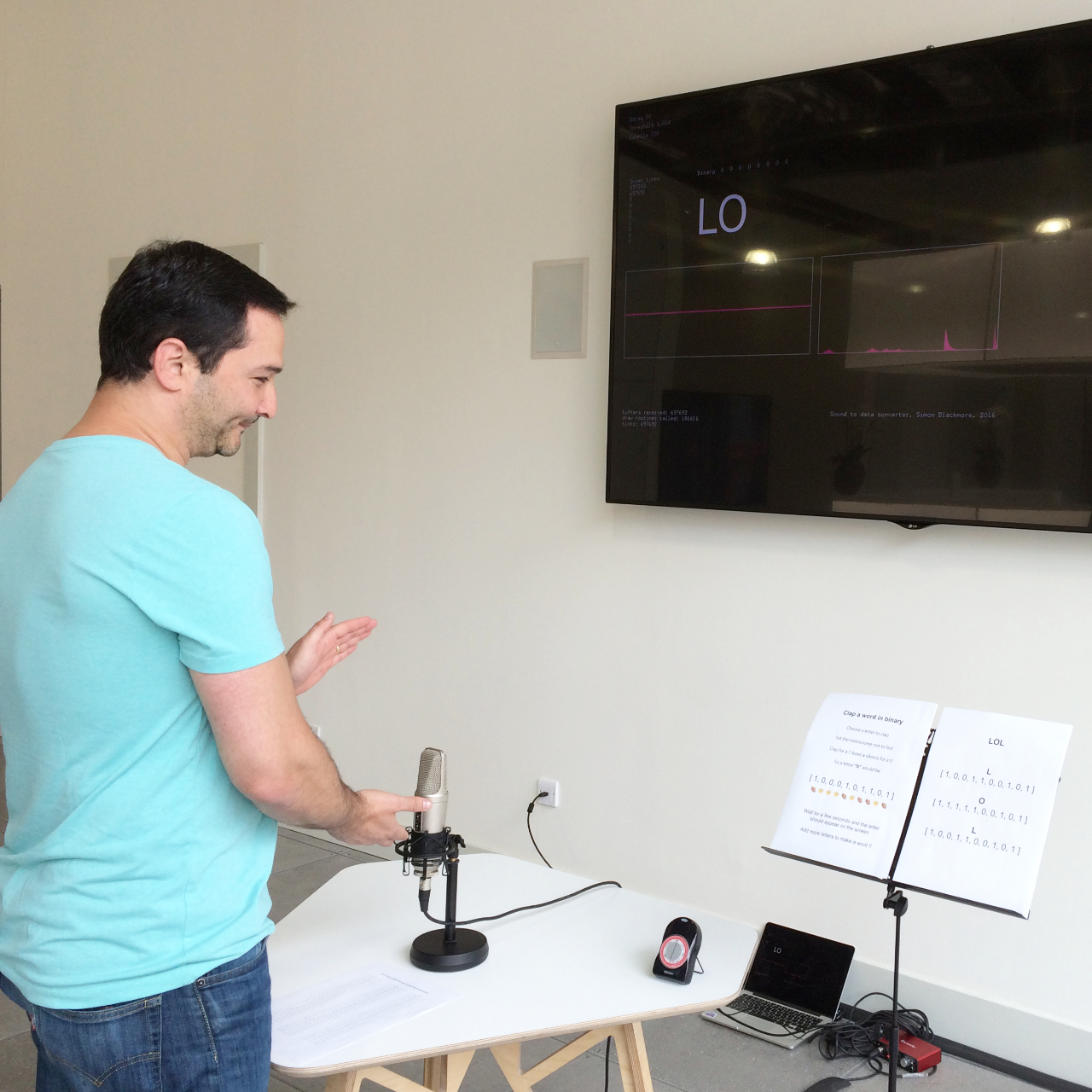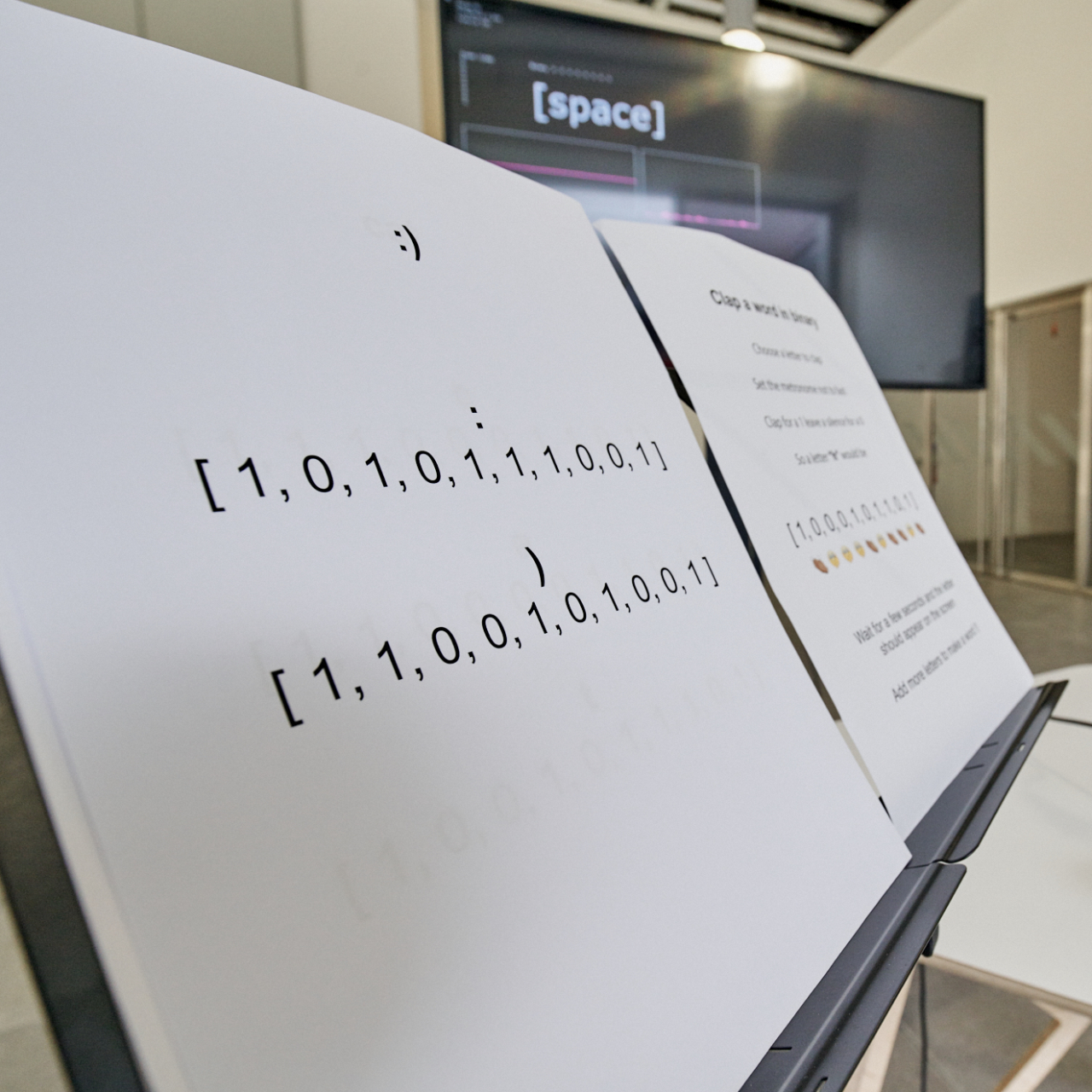Clapping ASCII 2016
an installation in which an audience produced text by clapping binary patterns
Clapping ASCII was an installation in which an audience could produce text by clapping rhythmical binary patterns to a metronome. The binary patterns for the alphabet and basic words were provided as printed scores for the audience to use. Each clapped pattern produced an ASCII character that was displayed on a screen.
Presentation history
Supernormal Festival, Braziers Park, Oxfordshire 2016
Hear East, Queen Elizabeth Olympic Park, London 2016


Background
The aim of this piece was to create a simple but rhythmically demanding interactive system whereby people could create text on a screen by clapping binary patterns. I was interested in presenting an installation that was both accessible but also had some challenge to it.
Group clapping ASCII, SPACE studios, 2016
System design
To realise the piece, I developed software that interpreted how an asynchronous serial port connection works. A microphone was connected to a Raspberry Pi using Focusrite Scarlett Solo USB Audio Interface. I wrote software in OpenFrameworks to detect peaks in the audio. If the amplitude of a signal reached a predefined amount the time was stored in an array. If there were no peaks detected after a certain amount of time, the software calculated the time between the claps to create a letter. This asynchronous system allowed participants to change the tempo on the metronome or even have a go without the metronome.
Scores
To make this work as accessible as possible I used written instructions and notated the rhythms using zeros and ones.
